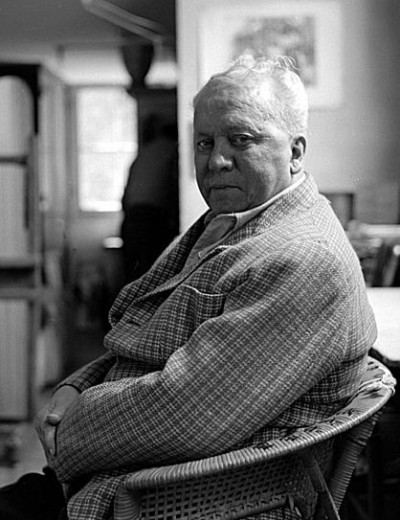
Raoul Dufy
About
Raoul Dufy was born in Le Havre, France in 1877 one of a family of 9 members. He left school at 14 to work in a coffee importing company. In 1895 when he was 18, he started evening classes in art at the Ecole Municipale des Beaux Arts there, and was influenced by Cezanne, Matisse and the Cubists. He developed a free and personal way of painting which had great charm and gaiety. His work was inspired by sport, the theatre, regattas and spectacles of various kinds.
In 1900 after a year's military service, he won a scholarship to the Beaux Arts in Paris, where he was a fellow student of Braque. He came in contact with the Fauves, a group of artists who were developing a new style of painting characterized by bold handling of strong colours. "Les Fauves" means Wild Animals, and that is what other artists thought of this group.
Dufy held his first one-man show in 1906 at the Salon d'Automne. He also illustrated books and designed sets for theatre, opera and ballet.
He worked closely with Paul Poiret, the designer. Dufy went to Munich in Germany in 1909 and brought back a new folk art, which Poiret used for decorations at his extravaganzas and parties.
In 1911, along with Poiret, Dufy became involved in the development of dye techniques and colour printing. They called their factory Le Petit Usine. Dufy's fabrics aroused great interest. Poiret employed them extensively on coats, capes and dresses. When Poiret took his mannequins to the races they were the center of attraction.
In 1912, he joined the French textile company Bianchini-Ferier as Artistic Director. He designed silks and brocades and made a series of tapestries. He also experimented with new themes and concepts. He remained with them from 1912 till 1928.
The May 1920 issue of the Gazette du Bon Ton illustrated Dufy's many different geometric designs on a group of models wearing Poiret creations.
In 1925, Poiret used a Dufy print for an evening dress which he displayed at the Exposition des Arts Decoratifs in Paris, which started the art style ART DECO.
After 1930, Dufy became totally involved with his painting and relegated his textile designing to a minor role. In 1937 he decorated the Electricity Pavilion at the Paris Exhibition.
Raoul Dufy died in Forcalquier, France, in 1953 at the age of 76.